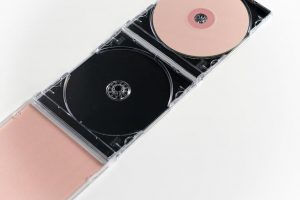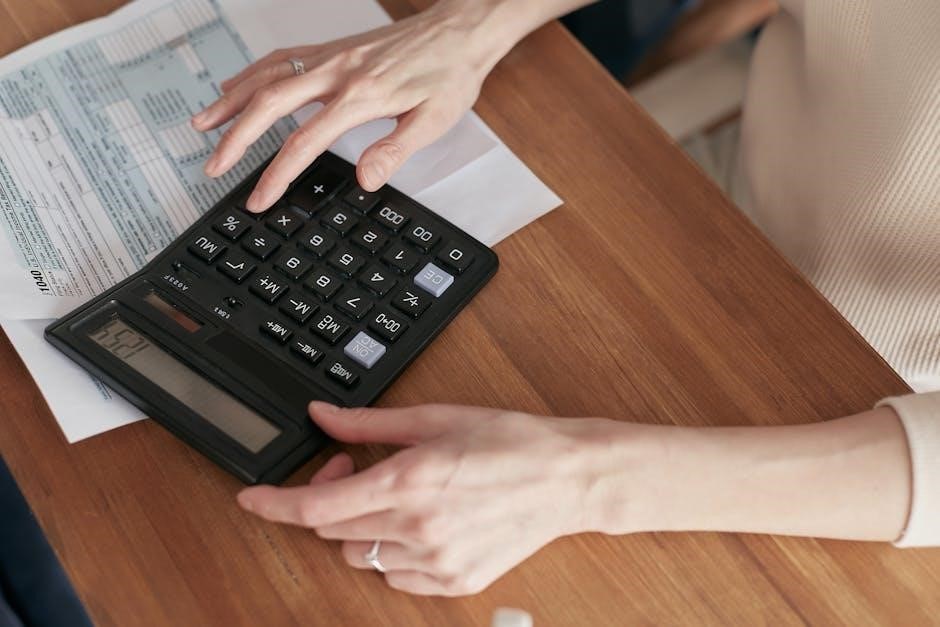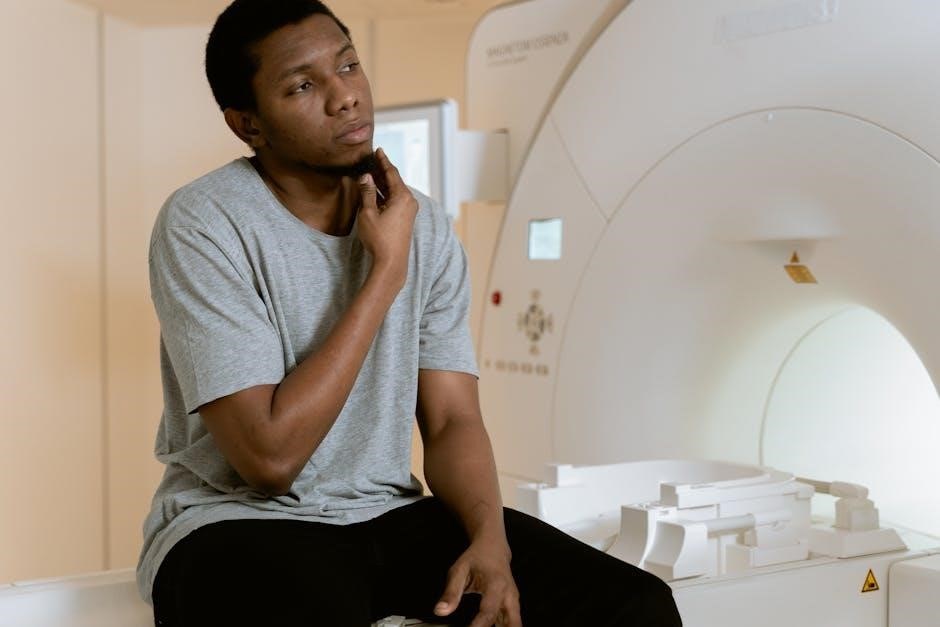mri guided breast biopsy cost

MRI-guided breast biopsy is a precise, minimally invasive procedure using magnetic resonance imaging to locate and sample suspicious breast tissue, ensuring accuracy without radiation exposure.
Overview of MRI-Guided Breast Biopsy
MRI-guided breast biopsy is a specialized imaging procedure where magnetic resonance imaging directs the removal of breast tissue samples for analysis. It uses advanced MRI technology to locate abnormalities undetectable by other methods. The procedure is typically performed with a core needle or vacuum-assisted device, ensuring precise tissue sampling. Unlike other biopsy methods, MRI-guided biopsy avoids radiation, making it a safer option for certain patients. It is particularly useful for lesions visible only on MRI and offers high diagnostic accuracy with minimal invasion, reducing scarring and recovery time.
Importance of Understanding Costs
Understanding the costs of MRI-guided breast biopsy is crucial for patients to make informed decisions. The procedure is generally more expensive than other biopsy methods due to specialized equipment and imaging technology. Costs vary by location, facility type, and insurance coverage. Patients without insurance may face higher expenses, while insured individuals often benefit from reimbursement. Knowing the financial aspects helps in planning budgets and exploring payment options, ensuring access to this accurate and minimally invasive diagnostic tool without unexpected financial burdens.

Cost Overview of MRI-Guided Breast Biopsy
MRI-guided breast biopsy costs range from $500 to $6,000, depending on location, facility, and insurance. Advanced imaging technology and specialized equipment contribute to higher expenses compared to other methods.
Average Cost Ranges
MRI-guided breast biopsy costs typically range from $500 to $6,000, varying by location, facility, and insurance coverage. On average, patients may pay $1,000 to $3,000 out-of-pocket. Specialized equipment and advanced imaging technology contribute to higher expenses compared to other biopsy methods. Costs may also include fees for the procedure, radiologist interpretation, and facility charges. Insured individuals often face lower out-of-pocket costs, while uninsured patients may pay the full amount upfront. Geographic variations and facility differences further influence the final cost of the procedure.
Factors Influencing Cost
The cost of an MRI-guided breast biopsy is influenced by location, facility type, and imaging technology. Urban areas and hospitals tend to charge more than imaging centers. Advanced MRI systems and specialized equipment increase expenses. Additionally, the use of contrast material, radiologist fees, and facility charges contribute to the total cost. Insurance coverage and negotiated rates also play a significant role. Geographic variations and the expertise of the medical team further impact pricing, making costs vary widely across different regions and healthcare providers.

Insurance Coverage and Out-of-Pocket Expenses
Insurance coverage for MRI-guided breast biopsy varies by plan, with many covering the procedure if deemed medically necessary. Out-of-pocket costs include copays, deductibles, and coinsurance. Insured patients typically pay less, while uninsured individuals may need to negotiate or use platforms like MDsave for discounts. Costs are influenced by facility type, location, and specific insurance terms.
Insurance Plans and Reimbursement
Insurance plans often cover MRI-guided breast biopsy if deemed medically necessary, though coverage varies by provider. In-network procedures typically reduce out-of-pocket costs, while out-of-network care may lead to higher expenses. Insured patients often pay copays, deductibles, or coinsurance, with average costs ranging from $1,000 to $3,000. Pre-authorization may be required to ensure reimbursement. Uninsured individuals can explore discounted rates through platforms like MDsave or negotiate directly with facilities. Understanding specific plan details is crucial to minimize financial burden.
Out-of-Pocket Costs for Insured Patients
Insured patients typically incur out-of-pocket costs for MRI-guided breast biopsy, ranging from $500 to $2,000, depending on deductibles, copays, and coinsurance. High deductible plans may increase expenses, but many patients pay between $1,000 and $3,000. Costs cover the procedure itself, with additional fees for initial MRI scans or follow-up care. Insurance plans often reduce financial burden, though specific coverage varies. Patients should review their plans to understand potential expenses and ensure reimbursement eligibility.
Options for Uninsured Patients
Uninsured patients can access MRI-guided breast biopsy through discounted cash payments or financing options. Providers like MDsave offer upfront pricing, with costs ranging from $597 to $6,270. Some clinics provide sliding-scale fees based on income. Additionally, non-profit organizations and community health centers may offer subsidized or free procedures. Patients can also inquire about clinical trials or assistance programs to reduce costs. Comparing rates at hospitals and imaging centers can help find affordable care without compromising quality.

Procedure Details and Requirements
MRI-guided breast biopsy involves precise imaging to locate abnormalities, guiding a needle for tissue sampling. Patients prepare by avoiding blood thinners and informing their doctor of medical conditions or allergies.
When MRI-Guided Biopsy is Recommended
MRI-guided biopsy is recommended when MR imaging reveals suspicious breast abnormalities, such as lesions or tissue that cannot be accurately assessed with other imaging methods. It is particularly useful for evaluating abnormalities in dense breast tissue or for lesions that are difficult to access using ultrasound or mammography. This method is also preferred when prior biopsy results are inconclusive or when a high-risk patient requires precise tissue sampling. MRI guidance ensures accurate targeting of the abnormal area, making it ideal for complex cases.
Types of MRI-Guided Biopsy (Core Needle, Vacuum-Assisted)
MRI-guided breast biopsy is performed using two primary methods: core needle and vacuum-assisted. Core needle biopsy involves inserting a hollow needle to collect tissue samples, offering a safe and accurate approach. Vacuum-assisted biopsy uses a specialized device to remove larger tissue samples, enhancing diagnostic precision. Both methods are minimally invasive, minimizing scarring and recovery time. Neither technique uses ionizing radiation, making them safer for patients. These approaches are chosen based on the size and location of the abnormality, ensuring optimal tissue collection while maintaining patient comfort and safety.
Preparation Steps for the Procedure
Patients must inform their doctor about medical history, allergies, and medications, especially blood thinners, which may need to be paused beforehand. Wear loose, comfortable clothing and remove jewelry. A hospital gown is often required. Avoid breastfeeding for 24-48 hours if contrast is used. Inform the radiologist about pregnancy or metal implants. Eating and medication instructions vary by facility. Plan for transportation home if sedation is used. The procedure involves lying on a special table with breasts positioned in cushioned openings. Follow all specific guidelines provided by the imaging center to ensure safety and accuracy.
Advantages of MRI-Guided Breast Biopsy
MRI-guided breast biopsy offers high accuracy, avoids radiation, and is less invasive, reducing scarring and recovery time compared to surgical methods.
Accuracy and Safety
MRI-guided breast biopsy is highly accurate due to precise imaging, ensuring targeted tissue sampling. It avoids radiation, reducing long-term health risks. The procedure is minimally invasive, minimizing bleeding and infection risks, which occur in less than 1% of cases. MRI’s detailed visualization enhances diagnostic confidence, making it ideal for complex or hard-to-reach abnormalities. Safety is further prioritized with non-ionizing technology, though rare complications like hematoma or pneumothorax can occur. Overall, it offers a reliable and safer alternative to surgical biopsies.
Less Invasive Compared to Surgical Biopsy
MRI-guided breast biopsy is significantly less invasive than surgical methods, requiring only a needle to collect tissue samples. This reduces tissue damage and scarring, promoting faster recovery. Patients typically resume normal activities quickly, with minimal discomfort. Unlike surgery, it avoids general anesthesia, lowering risks. The procedure is optimal for patients seeking a non-surgical solution, offering both convenience and reduced health risks. Its minimally invasive nature makes it a preferred choice for diagnosing breast abnormalities without the need for extensive tissue removal or prolonged downtime.
Minimal Scarring and Recovery Time
MRI-guided breast biopsy results in minimal scarring, as it involves only a small needle insertion, leaving a tiny puncture wound. Recovery is rapid, with most patients resuming normal activities immediately. The procedure avoids extensive tissue removal, reducing the risk of significant scarring. Post-procedure care is straightforward, typically involving minor wound management. Patients usually experience minimal discomfort, with bruising or soreness resolving quickly. This method offers a faster return to daily life compared to surgical biopsies, making it a convenient and recovery-friendly option for patients.

Risks and Complications
Common risks include bleeding, infection, and hematoma, while rare complications like pneumothorax can occur. Most complications are rare, with infection rates under 1% and minimal discomfort.
Common Risks (Bleeding, Infection)
Bleeding and infection are the most common risks of MRI-guided breast biopsy. Bleeding is typically minor but can lead to hematoma in rare cases. Infection occurs in less than 1% of patients. Both risks are manageable with standard medical care. Patients may experience mild discomfort, which is usually relieved with over-the-counter pain medication. Proper preparation, such as avoiding blood thinners, reduces these risks. Overall, complications are rare, making the procedure safe for most patients.
Rare Complications (Pneumothorax, Hematoma)
Rare complications of MRI-guided breast biopsy include pneumothorax, where air enters the chest cavity, potentially collapsing the lung, and hematoma, a large blood clot at the biopsy site. These occurrences are extremely uncommon, affecting fewer than 1% of patients. Pneumothorax typically results from deep tissue sampling near the chest wall. Hematomas may require drainage but are generally manageable. Both conditions highlight the importance of precise imaging guidance and post-procedure monitoring to ensure patient safety and minimize adverse outcomes.

Imaging Technology and Equipment
MRI-guided breast biopsy uses advanced MRI scanners with strong magnets and radio waves to create detailed images. Specialized tables with cushioned openings hold the breasts, ensuring precise tissue sampling without radiation exposure.
Role of MRI in Guiding the Biopsy
MRI provides high-resolution images of breast tissue, enabling precise localization of abnormalities. It uses a powerful magnetic field and radio waves to guide the biopsy needle accurately. Unlike other imaging methods, MRI avoids radiation, making it safer for patients requiring multiple procedures. The detailed cross-sectional views allow radiologists to track the needle in real-time, ensuring accurate tissue sampling. This technology is particularly advantageous for lesions visible only on MRI, enhancing diagnostic confidence and minimizing the need for repeat procedures.
Specialized Equipment Used
MRI-guided breast biopsy employs advanced imaging technology, including high-field MRI scanners and specialized exam tables with cushioned openings for breast access. The system uses radiofrequency coils to enhance image clarity. Biopsy instruments, such as core needles or vacuum-assisted devices, are precisely guided by real-time MRI images. Some systems incorporate tracking mechanisms to ensure accurate needle placement. Additionally, contrast agents like gadolinium may be used to improve lesion visibility. This equipment ensures precise tissue sampling while minimizing complications, making the procedure both effective and patient-friendly.

Geographic and Facility-Based Cost Variations
Costs for MRI-guided breast biopsy vary significantly by region and facility type, with higher prices in urban areas and hospitals compared to imaging centers due to overhead differences.
Cost Differences by Region
MRI-guided breast biopsy costs vary significantly across regions due to differing healthcare economics. Urban areas, such as New York or California, often have higher costs compared to rural regions. Factors like facility overhead, radiologist fees, and local demand influence pricing. For instance, procedures in the Midwest may cost between $1,000–$2,500, while coastal areas might range from $1,500–$3,500. These disparities highlight the importance of regional cost considerations when planning the procedure.
Hospital vs. Imaging Center Costs
Hospital-based MRI-guided breast biopsies are generally more expensive than imaging centers due to higher facility fees and overhead. Hospitals often charge $2,000–$5,000, while specialized imaging centers may range from $1,000–$3,000. This cost difference is attributed to hospitals’ broader service scope and emergency readiness, unlike standalone centers focused solely on imaging. Patients with insurance may find comparable out-of-pocket costs, but uninsured individuals can save significantly by choosing imaging centers, which offer transparency and reduced rates for upfront payments.

Patient Preparation and Safety Guidelines
Patients must disclose medical history, medications, and allergies. Stop blood thinners 3 days prior, wear loose clothing, and avoid jewelry. Pregnant women need clearance, and drivers may be required post-sedation.
Medical History and Medications
Patients must inform their doctor about medical history, including recent surgeries, and provide a list of medications, such as aspirin or blood thinners, which may need to be paused pre-procedure. Allergies, especially to contrast materials or anesthesia, should be disclosed. Herbal supplements and medications that could increase bleeding risks must be discussed. This ensures safety and prevents complications during the MRI-guided breast biopsy. Accurate disclosure aids in tailoring the procedure to individual health needs, minimizing risks and ensuring optimal outcomes.
Contrast Material and Allergies
Contrast material, often gadolinium, is used in MRI-guided breast biopsy to enhance image clarity. Patients must inform their doctor of any allergies to contrast agents or other substances. A history of allergic reactions may require pre-medication. Gadolinium is generally safer than iodine-based contrasts, but precautions are still necessary. Severe kidney issues may prevent its use. Proper disclosure ensures safe administration and optimal imaging during the procedure, crucial for accurate biopsy results and minimizing health risks.
Pregnancy and MRI Safety
MRI-guided breast biopsy is generally safe during pregnancy as it avoids ionizing radiation. However, gadolinium contrast should be used cautiously and only when essential, especially in breastfeeding mothers. The strong magnetic field poses no direct harm but is typically avoided in the first trimester unless benefits outweigh risks. Pregnant or breastfeeding women should consult their healthcare provider for personalized advice to ensure safety and optimal outcomes.

Post-Procedure Care and Follow-Up
After an MRI-guided breast biopsy, patients typically resume normal activities within a day. Mild discomfort or bruising may occur but usually subsides quickly. Follow-up care includes monitoring for signs of infection or bleeding. Results are typically available within a few days, and further treatment is planned based on the findings. Patients should adhere to any specific instructions provided by their healthcare provider to ensure proper healing and accurate results.
Recovery and Activity Restrictions
Recovery from an MRI-guided breast biopsy is typically quick, with most patients resuming normal activities within 24 hours. Mild discomfort or bruising at the biopsy site may occur but usually subsides within a few days. Patients are advised to avoid strenuous activities for 24-48 hours to minimize bleeding or hematoma risks. A small bandage or dressing is applied, and over-the-counter pain medication can manage any discomfort. It’s important to follow specific post-procedure instructions provided by the healthcare provider to ensure proper healing and prevent complications.
Handling Biopsy Results
Biopsy results are typically available within a few days. A radiologist examines the tissue sample to determine if it is benign, malignant, or inconclusive. Patients should discuss results with their doctor to understand implications and next steps. If cancer is detected, further testing or treatment options may be necessary. In cases of inconclusive results, additional imaging or a surgical biopsy might be recommended. Clear communication with healthcare providers ensures patients understand their diagnosis and any required follow-up care.

Comparing MRI-Guided Biopsy to Other Methods
MRI-guided biopsy offers superior accuracy for complex cases, balancing cost and effectiveness, while alternatives like ultrasound and stereotactic biopsies are often more affordable but less precise.
Cost Comparison with Ultrasound and Stereotactic Biopsy
MRI-guided breast biopsy generally costs more than ultrasound and stereotactic methods due to advanced imaging technology. Ultrasound-guided biopsies range from $356 to $1,298, while stereotactic biopsies cost $597 to $1,876. MRI-guided procedures typically range from $500 to $6,000, varying by location and facility. While MRI-guided biopsies are more expensive, they offer superior accuracy for complex or deep lesions, making them a valuable option for cases where other methods fall short, despite the higher cost.
Advantages Over Surgical Biopsy
MRI-guided breast biopsy is less invasive than surgical biopsy, reducing recovery time and scarring. It offers precise tissue sampling without the need for surgery, lowering risks of complications and costs. Patients resume normal activities quickly, making it a preferred option for diagnosing complex abnormalities. The procedure avoids ionizing radiation, enhancing safety, and is often faster, providing timely results for patients. This minimally invasive approach also minimizes discomfort and promotes faster healing compared to traditional surgical methods.
MRI-guided breast biopsy offers a safe, accurate, and cost-effective solution, balancing diagnostic precision with minimal recovery time and scarring, making it a valuable option for patients.
MRI-guided breast biopsy costs range from $500 to $6,000, varying by location, facility, and insurance. Factors like imaging technology and specialized equipment influence expenses. Insured patients often face lower out-of-pocket costs, while uninsured individuals may use platforms like MDsave to reduce fees. The procedure is valued for its accuracy, minimal invasiveness, and reduced recovery time compared to surgical biopsies, making it a cost-effective option despite higher initial expenses compared to other biopsy methods.
Final Thoughts on Cost and Value
While MRI-guided breast biopsy costs are higher than other methods, its precision, minimal invasiveness, and reduced recovery time offer significant value. The procedure’s accuracy and safety justify the investment, especially for complex cases. Insured patients benefit from lower out-of-pocket expenses, while uninsured individuals can explore cost-saving options like MDsave. Overall, the advantages of MRI-guided biopsy outweigh the costs, making it a valuable diagnostic choice for patients requiring detailed imaging and reliable results.